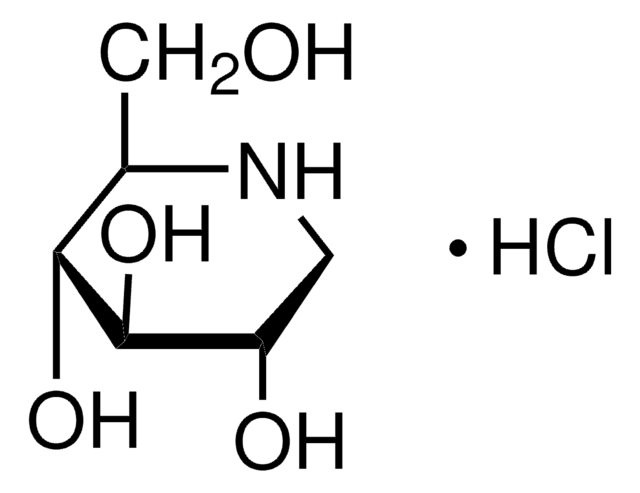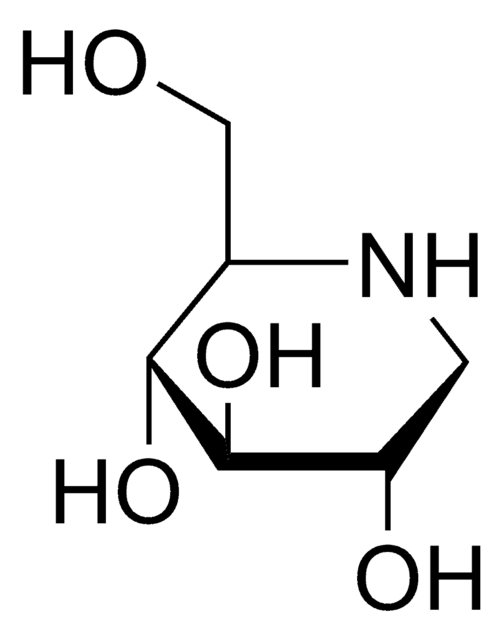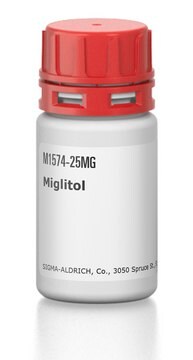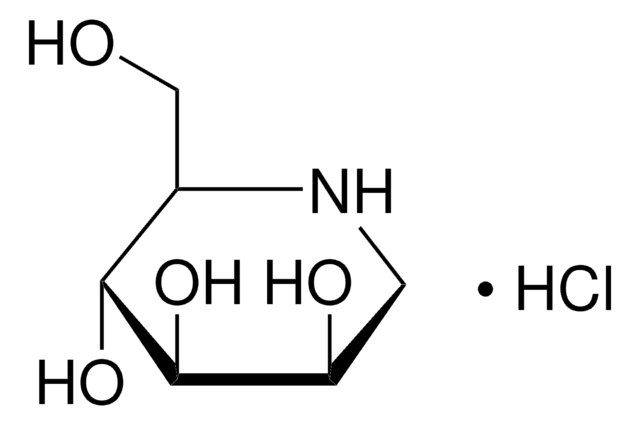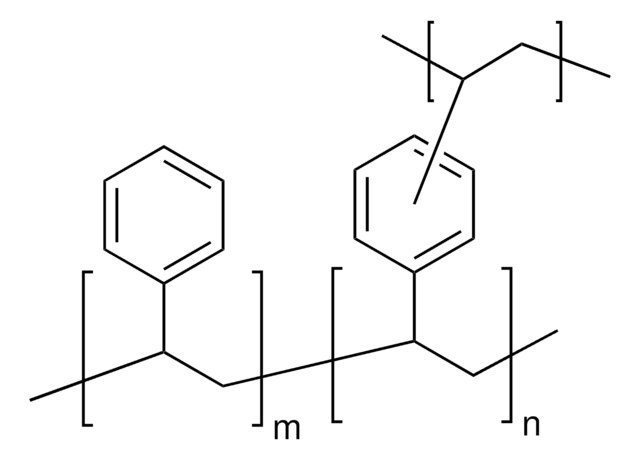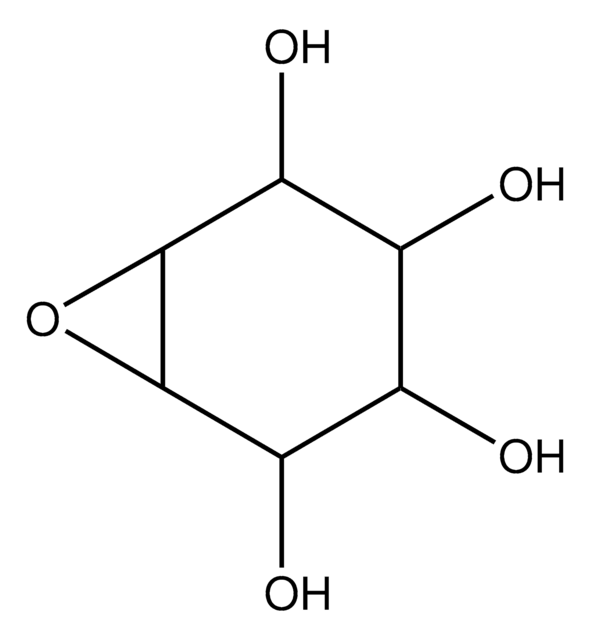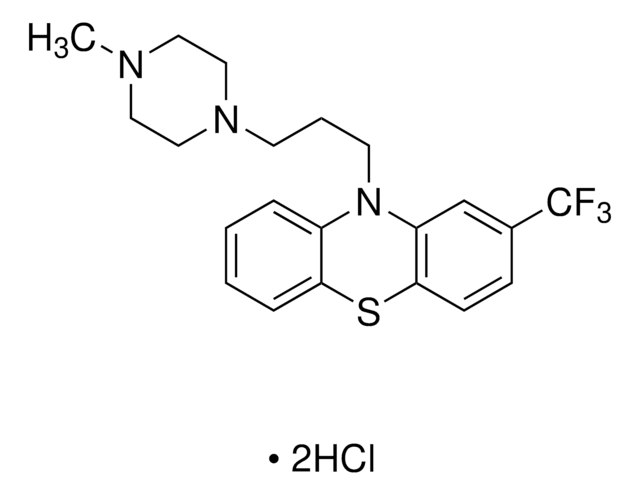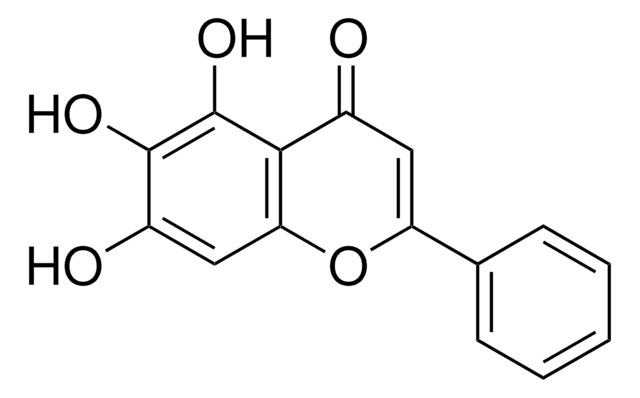Kluczowe dokumenty
B8299
N-Butyldeoxynojirimycin
film (dried in situ), ≥98% (TLC)
Synonim(y):
Miglustat, NB-DNJ
About This Item
Polecane produkty
Nazwa produktu
N-Butyldeoxynojirimycin, film (dried in situ)
Próba
≥98% (TLC)
Poziom jakości
Formularz
film (dried in situ)
rozpuszczalność
water: 9.80-10.20 mg/mL, clear, colorless
temp. przechowywania
2-8°C
ciąg SMILES
CCCCN1C[C@H](O)[C@@H](O)[C@H](O)[C@H]1CO
InChI
1S/C10H21NO4/c1-2-3-4-11-5-8(13)10(15)9(14)7(11)6-12/h7-10,12-15H,2-6H2,1H3/t7-,8+,9-,10-/m1/s1
Klucz InChI
UQRORFVVSGFNRO-UTINFBMNSA-N
informacje o genach
human ... UGCG(7357)
Powiązane kategorie
Opis ogólny
Zastosowanie
- in the inhibition of glycolipid synthesis in neuroblastoma cells
- in the inhibition the ceramide-specific glycosyltransferase in hepatocytes
- in the inhibition of β-glucosidase (GBA2) using fluorescence- activity assay in human embryonic kidney (HEK293) cells.
Działania biochem./fizjol.
Kod klasy składowania
11 - Combustible Solids
Klasa zagrożenia wodnego (WGK)
WGK 3
Temperatura zapłonu (°F)
Not applicable
Temperatura zapłonu (°C)
Not applicable
Środki ochrony indywidualnej
Eyeshields, Gloves, type N95 (US)
Wybierz jedną z najnowszych wersji:
Masz już ten produkt?
Dokumenty związane z niedawno zakupionymi produktami zostały zamieszczone w Bibliotece dokumentów.
Klienci oglądali również te produkty
Nasz zespół naukowców ma doświadczenie we wszystkich obszarach badań, w tym w naukach przyrodniczych, materiałoznawstwie, syntezie chemicznej, chromatografii, analityce i wielu innych dziedzinach.
Skontaktuj się z zespołem ds. pomocy technicznej